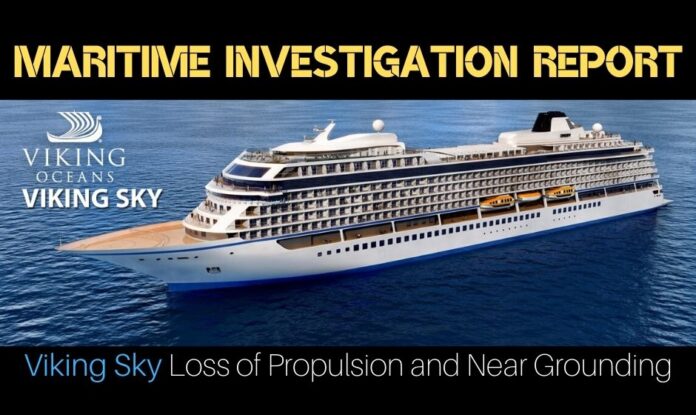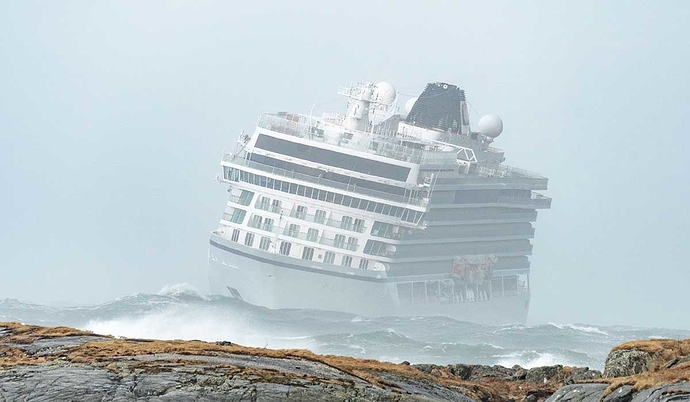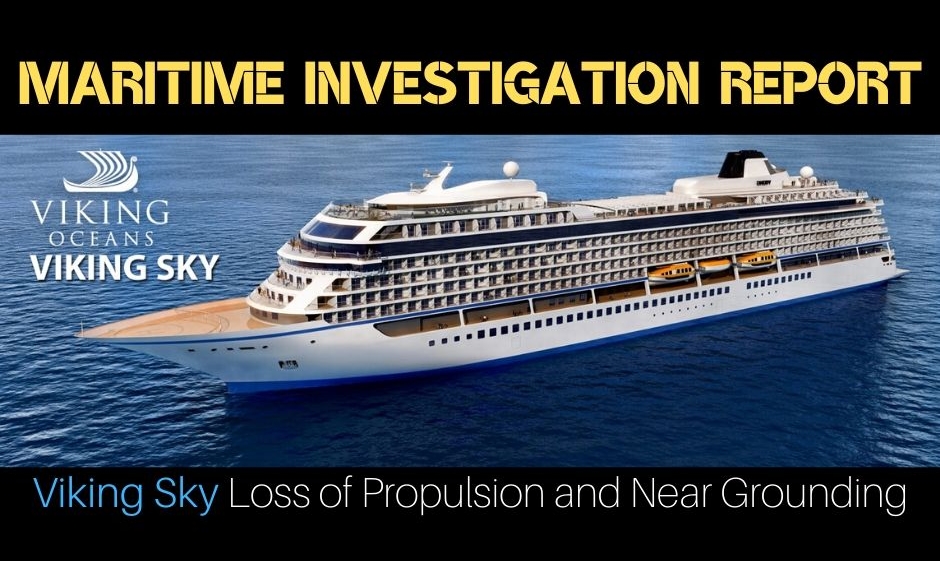
(www.MaritimeCyprus.com) The vessel is estimated to have come within a ship’s length of running aground with 1,374 persons on board, and the accident had the potential to develop into one of the worst disasters at sea in modern times.
The Norwegian Safety Investigation Authority (NSIA) issued a highly critical report of the cruise line and operational managers, shipyard and classification society, in regards to the incident. The NSIA report concurs with the Norwegian Maritime Authority's (NMA) earlier conclusion that inadequate oil levels in the ship's tanks were the underlying cause. However, in its contested finding, the NMA identifies possible SOLAS violations, stating that the vessel should not have departed Tromso, Norway two days prior.
As a member of the brand-new Fincantieri-constructed ocean cruise vessels for Viking, the 47,800-ton Viking Sky commenced operations in 2017. On March 21, 2019, the cruise ship, which had been in operation for two years, set sail from Tromso. Two days later, on March 23, in the afternoon, a severe Norwegian coastal storm caused a blackout, resulting in the loss of propulsion and steering. 1,374 individuals were on board at the time.
The ship drifted helplesly and almost grounded in what the NSIA describes as an accident that "had the potential to develop into one of the worst disasters at sea in modern times" because the situation was too bad to evacuate. When power was restored, the captain managed to steer the ship into deeper water while over 400 passengers were evacuated by helicopter. Up to 900 people, many of them with injuries and broken bones, were still on board the Viking Sky when it finally managed to limp into port.

The NSIA report, highlights operational, technical, and organisational safety concerns. The report involves Viking, Wilhelmsen Ship Management, Fincantieri, and Lloyd's Register. The incident has prompted calls for the International Maritime Organisation (IMO) and the International Association of Classification Societies to take appropriate measures to learn from this experience and prevent similar incidents in the future.
Both organisations agree that the primary cause of the accident was a lack of lubricating oil in vessel's operating diesel generators' lubricating oil sump tanks. The systems lost pressure during the rough seas as the ship pitched and rolled, causing the cruise ship to black out. It took 39 minutes until both propulsion motors were operational and the ship had enough power to maintain a speed of 1 to 5 knots ahead.
According to NSIA, the cruise ship should not have left Tomso because one of its four diesel generators was unavailable, putting the passengers and crew at risk. They claim the vessel lacked the redundancy required by the Safe Return to Port regulations, did not meet applicable safety standards, and did not comply with SOLAS regulations on matters such as the lube oil sump tank design. Furthermore, the report states that the design did not meet the engine manufacturer's recommendations.
In total, fourteen safety recommendations were issued by the NSIA as a result of its findings. They recommend that Lloyd's Register review and strengthen its plan approval process, as well as that Fincantieri review and strengthen the design process in order to guarantee that the lube oil sump tanks are in compliance with SOLAS. They also recommend that the shipowner and operator take action to ensure compliance with SOLAS and implement reviews of the oil monitoring system that are both systematic and holistic. In addition to this, they urge the International Maritime Organisation (IMO) and the International Association of Classification Societies (IACS), to incorporate technical guidance on the rules in relation to the oil pressure issue that took place.
For more details, you can download below the full Marine Investigation Report for the Loss of propulsion and near grounding of Viking Sky, on 23 March 2019:
Source: Norwegian Safety Investigation Authority
Read also:
Viking Sky Loss of Propulsion and Near Grounding 23 Mar 2019 - AIBN Interim Report and video














